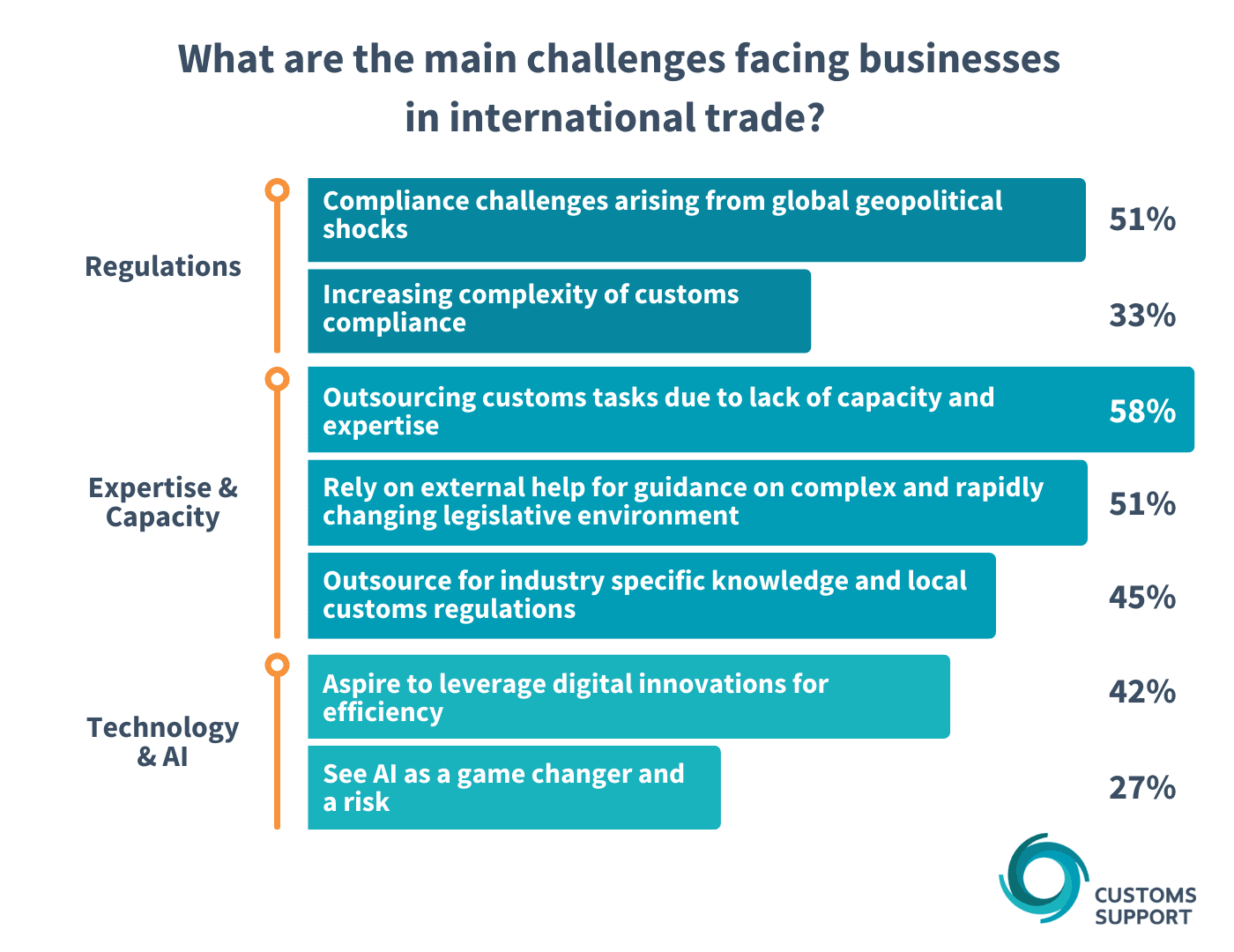
What are the opportunities and challenges of global trade

Global trade has become a defining feature of the modern economy, influencing everything from local job markets to international relations. Visible trade in goods and services is not only a measure of economic health but also a driving force behind economic growth in many nations. Understanding the opportunities and challenges that arise from global trade is crucial for policymakers and businesses alike as they navigate the complexities of this dynamic landscape.
Within the realm of global trade, the terms of trade play a pivotal role in determining the economic advantages a country can secure through its trading practices. When countries engage in trade, the balance between the prices they receive for their exports and the prices they pay for imports dictates their purchasing power and economic strength. As we explore the multifaceted world of global trade, we will examine its dynamics, the benefits it brings, and the challenges that require careful consideration.
Overview of Global Trade Dynamics
Global trade refers to the exchange of goods and services between countries, and it has evolved significantly over the years due to various factors, including technological advancements, changes in consumer behavior, and shifts in economic power. Understanding these dynamics helps explain how and why countries trade with one another and the implications for their economies.
The Role of International Trade Agreements
One of the key aspects of global trade dynamics is the existence of international trade agreements, which are established to reduce tariffs and other barriers to trade. These agreements can be bilateral, involving two countries, or multilateral, involving multiple nations. They aim to promote free trade, enhance economic cooperation, and foster growth in visible trade in goods.
- Free Trade Agreements (FTAs): These agreements eliminate or significantly reduce import tariffs, ensuring that goods can flow freely between member countries.
- Trade Partnerships: Strategic partnerships can help countries access new markets, diversify their economies, and bolster visible trade in various sectors.
- Regional Trade Agreements (RTAs): Regional blocs like the European Union or NAFTA (now USMCA) facilitate trade among geographic neighbors, often leading to increased economic integration.
The Importance of Terms of Trade
Terms of trade refers to the ratio at which a country's exports can be exchanged for imports. When the terms are favorable, countries can purchase more foreign goods for the same amount of exports, reflecting a strengthened economic position. This concept not only affects individual nations but also influences global economic relationships and power dynamics.
Calculating Terms of Trade
The formula for calculating the terms of trade is straightforward:
- Determine the price index of exports.
- Determine the price index of imports.
- Calculate the terms of trade: Terms of Trade = (Price Index of Exports / Price Index of Imports) * 100.
When the resulting ratio is greater than 100, a country experiences improved terms of trade, indicating it can acquire more imports for each unit of exported goods. In contrast, a ratio less than 100 signifies unfavorable terms, implying that countries may face challenges in sustaining their economies.
Opportunities Presented by Global Trade
The benefits of engaging in global trade are numerous and can significantly influence a country's economy. These opportunities contribute to economic growth, market diversification, and increased consumer access to products.
Economic Growth and Development Benefits
One of the most significant advantages of global trade is its potential to stimulate economic growth. By opening markets, countries can specialize in producing goods and services where they have a comparative advantage, leading to higher efficiency and productivity.
- Job Creation: Expansion into international markets often leads to job creation as businesses grow and require more labor.
- Increased Revenue: Exporting generates additional revenue streams, contributing to improved economic performance.
- Foreign Investment: A favorable trade environment attracts foreign direct investment (FDI), further fueling growth.
Diversification of Markets and Products
Global trade also allows countries to diversify their market presence and product offerings. By accessing foreign markets, businesses can reduce their dependence on domestic economic conditions and tap into new consumer bases.
- Access to New Consumers: Expanding internationally introduces products to a larger audience, increasing sales potential.
- Innovation:** Collaborating with foreign partners can lead to innovation and sharing of best practices, enhancing product development.
- Supply Chain Efficiency: Businesses can establish global supply chains, optimizing production and reducing costs.
Challenges Faced in Global Trade
Despite the numerous opportunities, global trade presents various challenges that countries must navigate to achieve sustainable economic growth. These challenges include trade barriers, environmental impacts, and technological disruptions.
Trade Tariffs and Protectionism
One of the most significant challenges facing participants in global trade is the imposition of trade tariffs and protective measures. Countries may resort to tariffs as a way to shield domestic industries from foreign competition, hampering the flow of visible trade in goods and services.
- Increased Costs: Tariffs raise the cost of imported goods, leading to higher prices for consumers and reduced purchasing power.
- Trade Wars: Escalation of tariffs can lead to retaliatory measures, resulting in trade wars that disrupt markets and harm economies.
- Market Uncertainty: Protectionist policies create uncertainty in international markets, discouraging investment and trading.
Environmental and Ethical Considerations
As global trade expands, concerns regarding environmental impacts and ethical practices have come to the forefront. Industries that engage in global trade must address issues such as carbon footprints, labor practices, and resource depletion.
- Sustainability: The environmental impact of shipping goods across the globe poses a significant challenge, leading to calls for more sustainable trading practices.
- Labor Rights: Companies must ensure fair labor practices in their supply chains, or they risk reputational damage and consumer backlash.
- Resource Management: The exploitation of natural resources for export can lead to ecological degradation, necessitating careful management and regulation.
Impact of Technology on Global Trade
Technology has transformed global trade in profound ways, providing new opportunities and insights but also presenting challenges that require adaptation. The digital revolution is reshaping how businesses operate and interact across borders.
Advancements in Logistics and Supply Chain Management
Technological advancements have revolutionized logistics and supply chain management, enhancing efficiency and reducing costs. Innovations such as artificial intelligence, blockchain, and automation have streamlined processes related to visible trade in goods.
- Smart Logistics: Technologies like the Internet of Things (IoT) enable real-time tracking of shipments, improving transparency and reducing delays.
- Data Analytics: Businesses can harness big data to optimize routes, manage inventory, and predict consumer demand.
- Blockchain: This technology enhances traceability and security in transactions, fostering trust between trading partners.
Challenges of Digital Trade
While technological advancements provide significant benefits, they also introduce challenges, particularly in ensuring cybersecurity and protecting intellectual property. Businesses must invest in digital infrastructure and training to navigate these evolving landscapes.
- Cybersecurity Risks: Increased reliance on digital systems exposes companies to cybersecurity threats that can disrupt trading.
- Intellectual Property Theft: Protecting innovations and proprietary technology has become increasingly complex in a globalized economy.
- Digital Divide: Countries with limited technological resources may struggle to compete in the global marketplace, widening economic disparities.
Future Trends in Global Trade
As we look to the future, global trade is poised for transformation influenced by emerging trends such as sustainability, digitalization, and geopolitical shifts. Businesses and governments must stay ahead of these changes to harness opportunities and address challenges effectively.
The Rise of E-commerce
The increase in e-commerce presents both challenges and opportunities for global trade. Online platforms enable small and medium-sized enterprises to access international markets, but they also challenge traditional retailers and established businesses.
- Global Market Access: E-commerce allows businesses of all sizes to reach customers worldwide, potentially increasing visible trade in goods.
- Logistical Challenges: Companies must adapt their logistics to manage increased online orders and international shipping requirements.
- Consumer Preferences: Businesses need to tailor their offerings to meet diverse needs across different markets, adapting to local preferences and cultures.
Sustainability and Corporate Responsibility
As consumers become more environmentally conscious, businesses in global trade will need to adopt sustainable practices and demonstrate corporate responsibility. Failure to do so could jeopardize brand reputation and consumer trust.
- Green Supply Chains: Companies are increasingly focusing on sustainable sourcing and reducing their carbon footprints throughout the supply chain.
- Ethical Trading Standards: Adhering to ethical trading practices fosters trust with consumers and builds brand loyalty.
- Innovation for Sustainability: Businesses that prioritize sustainable innovation may gain a competitive edge in the global marketplace.
Conclusion: Balancing Opportunities and Challenges
In conclusion, the world of global trade is replete with both opportunities and challenges. Nations that understand and leverage their strengths can benefit from increased visible trade in goods and services, fostering economic growth and development. At the same time, addressing challenges such as trade barriers, environmental impacts, and technological disruptions is paramount for ensuring sustainable trade practices.
As we enter a new era of global trade, a balanced approach that considers both opportunities and challenges will be crucial for navigating the complexities of the international marketplace. Embracing innovation, fostering cooperation, and promoting ethical practices will ensure that nations can thrive in an interconnected world.
Did you find this article helpful? What are the opportunities and challenges of global trade See more here Education.
Leave a Reply






Related posts